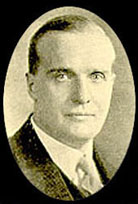 Hugh Stott Taylor (6 February 1890 - 17 April 1974) was an English chemist primarily interested in catalysis. In 1928, in a landmark contribution to catalytic theory, Taylor suggested that a catalyzed chemical reaction is not catalyzed over the entire solid surface of the catalyst but only at certain ‘active sites’ or centers. He also developed important methods for procuring heavy water during World War II and pioneered the use of stable isotopes in studying chemical reactions.
Hugh Stott Taylor (6 February 1890 - 17 April 1974) was an English chemist primarily interested in catalysis. In 1928, in a landmark contribution to catalytic theory, Taylor suggested that a catalyzed chemical reaction is not catalyzed over the entire solid surface of the catalyst but only at certain ‘active sites’ or centers. He also developed important methods for procuring heavy water during World War II and pioneered the use of stable isotopes in studying chemical reactions.
Taylor was born in St Helens, Lancashire, England in 1890. He attended the University of Liverpool, where he received his B.Sc. in 1909 and his M.Sc. in 1910. Taylor then carried out three years of graduate work in Liverpool, after which he spent one year at the Nobel Institute in Stockholm in the laboratory of Svante Arrhenius and another at the Technische Hochschule in Hanover under Max Bodenstein. These studies earned him a Doctor of Science degree from the University of Liverpool in 1914.
Taylor began at Princeton in 1914 as Instructor in Physical Chemistry and became chair of the Chemistry Department at Princeton by 1926, where he served until 1951. In 1927, Taylor became the David B. Jones Professor of Chemistry at Princeton. Taylor also served as the Dean of the Graduate School at Princeton from 1948-1958.
As Chair of Chemistry from 1926-1951, Taylor developed the Chemistry Dept. at Princeton energetically and oversaw the construction of the Frick Chemical Laboratory.
Taylor was knighted by both Pope Pius XII and Queen Elizabeth II. There is a Hugh Stott Taylor Chair of Chemistry at Princeton, funded by an anonymous gift of $500K in honor of Taylor's contributions to Princeton.